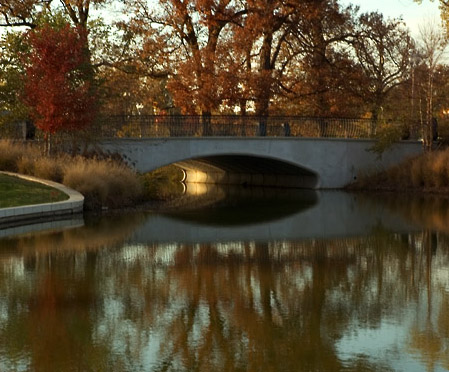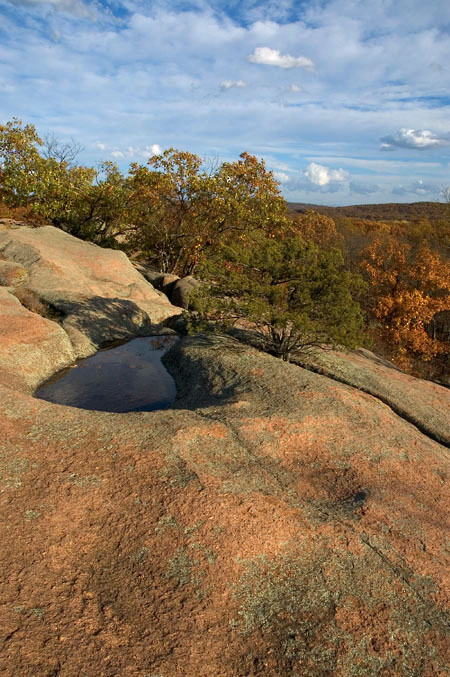urh…Poppy? Hydrangea? Lilly?

Weed?
urh…Poppy? Hydrangea? Lilly?

Weed?
I thought I would break in with a little tech talk and discuss FOAF, or Friend of a Friend. If you hang around weblogging for any length of time, you’ll probably come across this term. Might be nice to know that it’s not some kind of new goverment regulation.
FOAF is XML created using a specific RDF (Resource Description Framework) vocabulary that allows you to provide a file with information about yourself, and basically, who you know. It’s the brainchild of Dan Brickley and I believe Libby Miller, and has its own support site and blog, though I’m not sure if the weblog is still being updated.
You don’t usually make a FOAF file by hand–either it’s created for you by your tools, or you can use the FOAF-a-matic, a handy forms-based tool that generates valid FOAF XML for you. You can then copy the contents into a file, named something like foaf.rdf, and put this file into the same location as your weblog. Some weblogging tools can do this for you, and you’ll need to check with yours to see if it does, or doesn’t manage FOAF files for you.
To enable people to autodiscover your FOAF file, you can then add the following into your primarily web page, in the HEAD section:
(Note, I had to remove the example because it was not showing up in the page, even with angle brackets being escaped. This most likely is a bug with the underlying tool implementation. The link to autodiscovery also shows the code.)
To see a badly outdated version of a FOAF file, you can check out mine.
Now that you have an idea of what it is, you might be wondering what’s it good for.
Some weblogging tools use FOAF files to auto-generate blogrolls for a weblog. Some people might consider this a goodness, but I’m not one of them. The reason why is that just because you know someone doesn’t mean you want to recommend to the world that they read them.
Others build libraries of photos and friends’ photos using FOAF and it’s image capability, which could be particularly useful for managing photos across many different web sites but based on the same event.
There has been talk of using FOAF to build a Web of Trust — to be able to state who you trust in FOAF and then a person knows based on this that they can also trust them. Though there has been a great deal of work on FOAF and privacy and accountability, the vocabulary isn’t there yet, and even the creators would be hesitant about recommending FOAF as it stands now to be used for a basis of trust.
There has also been discussion about extending the FOAF vocabulary to expand the types of relationships available. However the concern on this is the impact something like this could have, if one person considers you a friend and you put into your FOAF file that they’re just someone you know. And do we really want people to know whom we love, have birthed, work for, and so on? Sometimes. Sometimes not.
However, using relationships internally in an application, something such as an address book, could be very useful — but then why use FOAF, which is primarily used to create networks based on publicly accessible FOAF files.
Regardless of use and opinions about FOAF, it is now the second most widely dessiminated example of RDF/XML in use today, after RSS 1.0. And if you hang around weblogs, you’ll be stumbling across it at one time or another. More than that, the tools you use may be asking you whether you want a FOAF file or not.
Another significant event that webloggers have participated on is the discovery that documents used on a CBS 60 Minutes were most likely fake. These documents were purported to be written by a young George Bush’s commanding officer, where he complains about having to bow to pressure and give Bush preferential treatment.
Webloggers went into full cry immediately, primarily focusing on the font used in the papers, saying that it couldn’t possibly be from a typewriter of that time — it looked more like the work of a recent Word document, instead.
Unlike the Lott event, the CBS Documents Event is still fresh, and I believe it was PowerLine that cast the first doubt on the veracity of the documents, as did other webloggers, as noted in this NY Sun article.
(Note, it may have been Little Green Footballs, according to this story.)
Also unlike Lott, there is some contention that the instigation into the investigation of the documents was derived primarily from weblogger focus. Articles also appeared almost immediately about the documents, such as this article at CNN. (Like the Trott event, we hope to get a page up at the wiki listing all relevant weblog posts and articles.)
Almost from the start CBS had to defend itself, and eventually retract their support of the documents, and Dan Rather, who led the story, acknowledged that they had made a mistake, and apologized.
The whole event was over in a little over two weeks, but while it lasted it became a firestorm within weblogging, dominating discussions so much that it was difficult to find sites that weren’t weighing in with an opinion.
Still, as Rather had apologized, and CBS had issued a retraction, what other course was there to follow? It would seem that people would have to decide if they wanted to trust CBS News, or Rather, but mistakes do happen and even professional journalists have been known to stumble a time or two. Still, what was wrong was corrected.
But the issue didn’t die out. Now that webloggers had prevented dubious material being accepted as fact the assumption might be that the topic had run its course, but this wasn’t so. Now the webloggers focused on punitive actions against CBS, generally, and Rather specifically–calling for him to be fired. It’s here when weblogging moved from prevention to punishment; from Beauty to the Beast.
Roger L. Simon was one who called for the firing of Rather saying:
Currently Drudge is reporting: Rather, who anchored the segment presenting new information on the president’s military service, will personally correct the record on-air, if need be, the source explained from New York.
What a pathetic response. Even with a correction, can you imagine ever trusting a word out of Rather’s mouth again? Can you imagine respecting CBS, “Sixty Minutes”?
Not me. If Rather does not resign, those institutions will wither with their anchorman.
The term Rathergate was coined to talk about Dan Rather’s error and what the webloggers perceived was to be a CBS company cover-up. The Blog Herald considers something like this site to represent the promis of weblogging. A weblog was created from it, to urge people to write to the advertisers and let them know that they should pull their ad money from the station. Others started sing-a-longs mocking the term and Rather and CBS News. Most, though, just called for vengence. Fire Rather, eliminate CBS readership.
Tthe anger wasn’t just confined to Rather and CBS. When a Professor at a Utah university wrote a paper about how the documents could be legitimate, he came under fire from webloggers who began to see in him a part of the Conspiracy, whatever the Conspiracy was. They didn’t just discredit his writing; they discredited him, trying to get him fired. When he edited his document, they pointed to this as an example of his duplicity; him being unaware of weblogger’s almost manic obsession with never editing material after posted (an obsession not adhered to by yours truly, by the way).
Eventually a new scandal came along, and the webloggers have moved on to other topics, where far too many swarm on issues, like bees on particularly juicy flowers. This leaves us now in a room full of tattered yellow tape, trying to decide if that pulped matter on the floor is the remains of Dan Rather, or just the remains of so many tossed rotten tomatoes.
We’re also left with questions, such as why did webloggers feel compelled to continue the clamor against CBS once the company admitted its error, and apologized for it, as well as broadcasting a correction?
Many would say because we all have a moral right to ensure that the press knows that we’re always there, fact checking them, and that the free and biased ride they’ve been on is over. Others would say that the punishment of Rather did not fit his crime of broadcasting fake material critical of George Bush so close to an election.
But there is an element of links and power to this story; that many jumped on the Rathergate bandwagon because that’s where the buzz was, and like blood attracting sharks, webloggers, particularly political webloggers, are attracted to buzz. The more buzz, the more links, and the more power a weblogger obtains — we only have to look at PowerLine’s swift rise in the ego lists to see the combined effect of a hot issue and careful handling. This explains continuing with the story as long as possible–not just to exact retribution, but also to extract the maximum amount of links and power from the story as possible, before moving on to something new.
Many people point to the webloggers involvement in exposing the CBS Documents as fraud, as an example of one of our finer moments, and there is some justification for this pride. But there’s also more than a little about this affair that should make all of us pause; to take stock of the power of the link, the danger of a mob, and remember old sayings about ultimate power corrupting ultimately.
There is one story for Kitchen I’m working on called “When Beauty becomes the Beast”. It’s about the CBS Documents and their impact on weblogging (not to mention weblogging’s impact on the CBS investigations). For some reason this subject saddens me a bit–as if we’re seeing the end of something that once was and we won’t have again. Yet webloggers point to this event with pride; a shining moment of triumph, and vindication, for weblogging.
Oddly enough, I got the title for the story because the incident reminds me of an extremely well written article by Terri Windling about the tale of Beauty and the Beast. In the article, Ms. Windling traces the history of the story and its various incarnations, as well as the influences of society on the story over time–in writing that’s lucid and entertaining.
One phenomena of the story she notes is how sympathetic the Beast was made; to the point that readers experience disappointment when the Beast turns into the Prince at the end of the story. Windling wrote about a play that actually focused on this disappointment:
In the 20th century the story was subtly altered again. In 1909, French playright Fernand Nozier wrote and produced an adult version of Beauty and the Beast with a fashionable Oriental flavor. Nozier’s rendition is humorous, yet beneath its light surface the play explores a distinctly sexual subtext, and the duality of body and spirit. In this version, all three sisters find themselves powerfully attracted to the Beast. When Beauty’s kiss turns him into a man, she complains: “You should have warned me! Here I was smitten by an exceptional being, and all of a sudden my fiancé becomes an ordinary, distinguished young man!”
This play was created in 1909 but, oh, I would wish that this version be staged today. I would pay money–real money– to see it, just to hear that last line said within the ambiance mentioned in the writing.
Windling discusses the Disney version of the film, which she liked and had many favorable things to say on it; but she also thought that much of the strength of the original tale was lost in Disney’s effort to make the tale safe. At the end of her article she asked, whether it mattered:
In Disney’s beautiful animated version of Beauty and the Beast, we take one step forward with the creation of a literate and courageous heroine, and two steps backwards as the heart of the tale is lost in the musical razzle-dazzle. But hey, the film is entertaining and fun. Young Lillian and I enjoyed it thoroughly. So should we care about what’s been lost in the process?
In my opinion, you bet we should. It does no service to lie to children, to present the world as simpler than it is. Villains rarely appear with convenient black hats, good people are rarely perfect. Beauty has gone to Hollywood now. Poor Beauty. Poor Beast. Poor us.
Something to remember, as I write my post on webloggers and the CBS Documents, and how beauty can turn beastly: good people are rarely perfect, and good intentions less so.
Windling also pointed to a poem about Beauty and the Beast by Jane Yolen, called “Beauty and the Beast: An Anniversary” that I rather liked. It made me think of growing old with someone, and how nice it sounded:
It is winter now, and the roses are blooming again, their petals bright against the snow. My father died last April; my sisters no longer write, except at the turning of the year, content with their fine houses and their grandchildren. Beast and I putter in the gardens and walk slowly on the forest paths. He is graying around the muzzle and I have silver combs to match my hair. I have no regrets. None. Though sometimes I do wonder what sounds children might have made running across the marble halls, swinging from the birches over the roses in the snow.
I do have other Fall photos, from Elephant Rocks, Shaw, Forest Park and more, but I’ve had little time to prepare them, or think of what to write to accompany them. I’ll post most of the photos eventually at Tinfoil. I need to start becoming more selective, though. One really satisfying picture makes more of a statement than several good enough photos and one truly satisfying photo.

I did receive a surprise when driving through Iron County, past the homes with the old Confederate flags out front–several Kerry/Edwards signs. No Bush signs, but plenty of those green and white “Jesus” signs, and that’s about the same as a “Vote for Bush” sign in these parts.
“In these parts”
I have gone native. At Johnson Shut-Ins, which is always so much friendlier than Elephant Rocks, several people ‘sayed hallo’ as they passed; commenting on my walking stick, or if I’ve had good luck with the photos today. I noticed that when I answered, I sounded like someone born and bred in the backwoods of Missouri. Or, as I should say, Missoura.
Missour-a. Halleluj-ah. Okay, now I get it.

Saturday was a broken sunny day, a wonderful drive to Elephant Rocks and The Shut-Ins. The Fall color has peaked, though, as it has for most of the state. Only the deeps of the Ozarks might still have it. After I take what photos I can of the mills and the last bit of fall foliage, we’ll be into winter. Then I’ll be leaving my camera at home and focusing just on the hikes and walks.
Sunday I went to Shaw, and on the way impulsively stopped by Purina Farms to see if I could take photos of cats. The Farm was closed, preparing for a Halloween bash later that afternoon. I decided to go to it, and killed time until they opened at Shaw and exploring Highway 100 (or is it Route 100) that leads from Gray Summit.

I just followed whatever road looked good, and ended up driving past one of the most beautiful golf courses I’d ever seen, with homes on the hills above it that must have been 6000 square feet, at a minimum. It was beautiful, but I’ve never understood why anyone needs a house that big.
I ended up on a very narrow road that went up a steep hill, full of curves, and I gulped a few times coming around some of the corners. I spotted a Conservation Area I hadn’t heard of, Engelmann Woods I believe it was, and stopped to walk around a bit.
It was a pretty area with an easy trail, covered in dry, fallen leaves. Up ahead I spotted the bright red splash of color that you get with Poison Ivy this time of year. Which is good because as the trail progressed, the Poison Ivy got much thicker, and much harder to avoid.
Of course, Poison Ivy leaves also fall off, and sure enough many of the leaves I was walking through were Poison Ivy. That ended my walk, but I’m glad to say, I didn’t get any exposure from the plants. It sure was a pretty day, though, with warm weather and a cool breeze, and hearing the sound of the dry leaves underfoot. Is there any sound better than the swish crackle of walking a trail inches deep with dry fall leaves?

When I got back to the car, two Harleys were parked next to it, and I grabbed a picture of them because, well, they were Harleys.
From there, I headed back down the curvy road, which is much more interesting, and back past the mega-homes to Purina–just in time for the Duck Herding show, but that’s for another post because it’s late and I’m tired.
